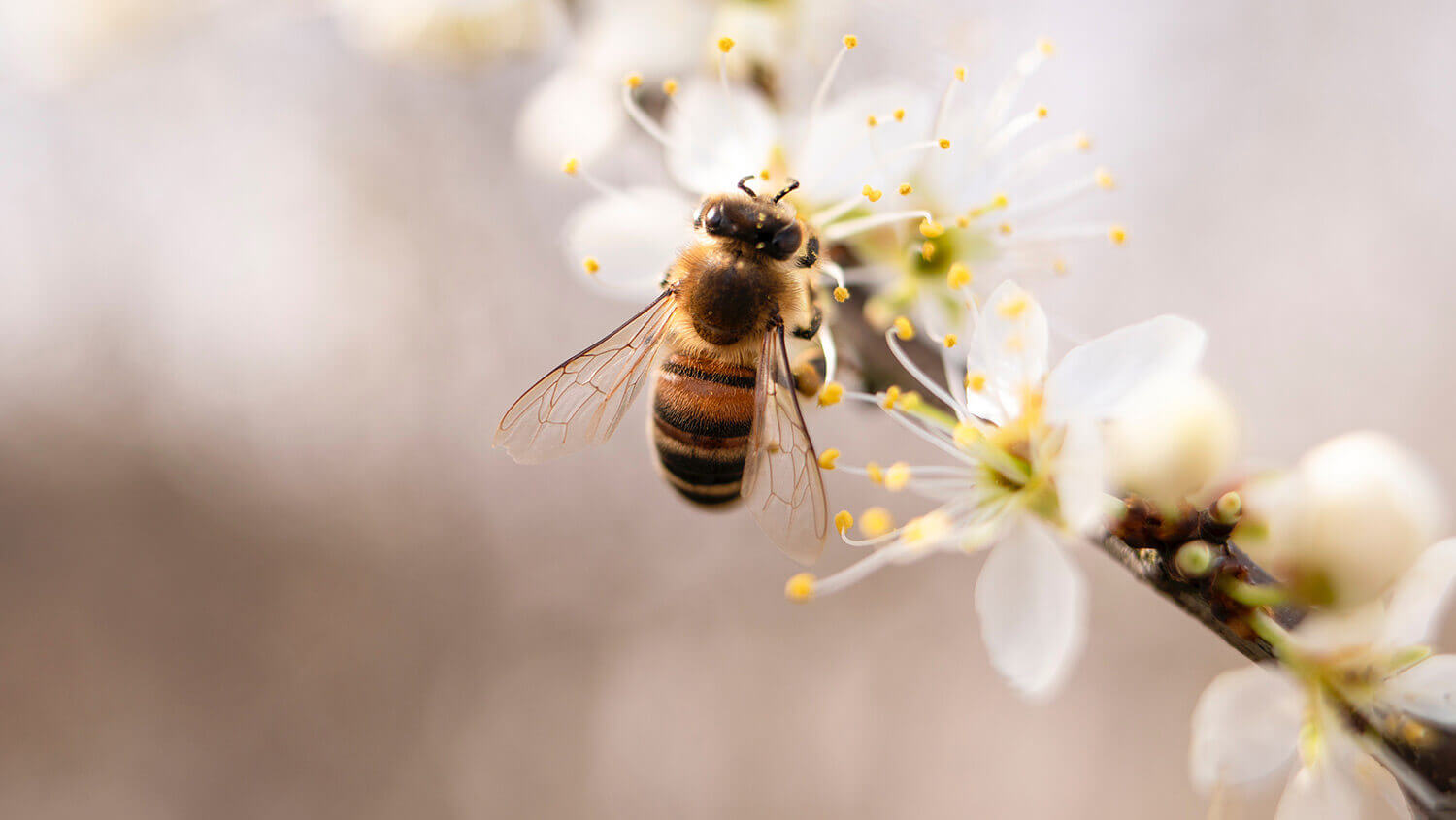We read and hear more and more often about anti-wrinkle beauty creams that contain bee venom, or apitoxin in technical jargon. That sounds dangerous, but it isn't.
Everything on earth is poisonous, nothing lacks toxicity. Only the dose turns a substance into a poison or a medicine” wrote Samuel Hahnemann (founder of homeopathy) and other scientists before him.
The same is true of bee venom. Who doesn't know this - you walk across a beautiful flower meadow and get stung in the foot by a bee. An immediate severe pain sets in, which usually lasts for a few days. It's even worse for people with allergies - bee venom can cause an allergic shock or enormous swelling through a sting.
So why should this substance be used in cosmetics? In short: bee venom can do many things that medical products can do and some even better. As a natural product, it contains no undesirable accompanying substances. One after the other.
The origin of bee venom
Bees produce different amounts of poison in the course of their development from young to guardian bees. There are two tubular venom glands in the abdomen of the bee, each of which produces an alkaline and an acidic component of the bee venom. When the glands expand, these two secretions are sent to the venom sac for storage. In young bees this venom sac is almost empty, in guard bees it is full to the brim. Bee venom, a clear liquid, is the deadliest protein toxin known. It is used by the bee to defend itself against enemies. In doing so, she accepts that she will die. Because as soon as the bee bores its two bristles into the skin, they get stuck in the soft skin of the enemy due to their finest barbs. If she wants to flee, her abdomen is ripped out of her body.
Extraction of bee venom
For cosmetics, especially natural cosmetics, bee venom extraction with "bee murder" is out of the question. How do people get access to the coveted raw material? Since the bee only stings when it feels threatened or irritated, a gentle method has been developed to encourage it to sting. For this purpose, glass plates with a thin fleece are placed in or in front of the beehive. Fine metal threads run through the glass plate, through which an electric current is conducted. If the bee sits on the glass, you let a light current flow through the wires, the bee is irritated, stings the fleece and releases its poison on the glass plate. Since the ground is hard, she can retract her stinger again.
The consequences of the bee sting
If the bee stings the skin, it swells, hurts, itches, becomes red and at the same time has a strong blood supply. This last point is interesting for medicine and cosmetics. The promotion of blood circulation supports the healing of inflamed joints and supports the immune system. This is used by medical professionals in the treatment of rheumatism, joint diseases and sports injuries. Such treatments were already mentioned in writing by Hippocrates and Pliny.
Bee venom - the alternative to Botox!
How does bee venom work?
What is special about bee venom is that it contains well over 30 different components, some of which cannot be produced synthetically at all. Of these, 18 components are biologically very active. Furthermore, bee venom contains peptides (proteins) and enzymes, which in turn complement other active ingredients and stimulate to activate our skin cells. When the bee venom hits the skin, it makes them think they've been hit by melittin (the main ingredient in bee venom). It starts with defense mechanisms - i.e. the blood circulation in these skin areas is stimulated, the skin increases collagen and elastin production.
And this is where the desired anti-aging effect comes in. Collagen and elastin are two main components of our skin that are responsible for strengthening the tissue and firming the skin. As we age, collagen and elastin become less productive and the skin becomes less elastic, tight, and firm. This is counteracted by the apitoxin (bee venom).
Kate Middleton also swears by bee venom
Another effect is that melittin settles in the cell membrane and opens channels through which other active ingredients in the care products can penetrate the skin better. The skin appears smoother, more relaxed and appears firmer. Because of this property, bee venom is also called an 'alternative to Botox'. The Duchess of Kent and Kate Middleton, for example, swear by creams with bee venom.The use of products with bee venom can be interesting for your institute. There are creams and serums with bee venom, which, depending on their ease, can also be incorporated with ultrasound. Or you can use fleece masks soaked in a cocktail of active ingredients and bee venom. With this you can let your customer rest for 15 to 20 minutes and massage the bee venom further into the skin with your massage cream. This natural active ingredient certainly has great potential and offers an alternative to all artificially produced anti-wrinkle substances.
Living Nature's Bee Venom fleece mask made from organic cotton is saturated with 100% pure New Zealand Manuka honey and bee venom - a natural Botox substitute.


3 comments
Hilft bienengiftsalbe bei arktischen ceratose
Sehr geehrte Leserein, vielen Dank, dass Sie sich mit Ihrer Frage an uns wenden. Sie möchten wissen, ob diese Creme Ihnen helfen kann.
Bitte beachten Sie, dass wir eine Tuchmaske, eine Seife und ein Zahngel mit Bienengift verkaufen. Eine Creme haben wir nicht im Sortiment. Und dann ist die Frage, bei was es helfen soll? Und bei medizinischen Indikationen darf und ich keine Aussagen machen, da ich keine Ärztin bin. Gerne können Sie sich aber für eine Pflegeberatung auch telefonisch an uns wenden unter der Nummer 0871 9668516. Alles Gute, viele Grüße, Birgit Corall
Diese Bienengift Creme würde mich interessieren.Bin 76Jahre hilft mir das
Leave a comment